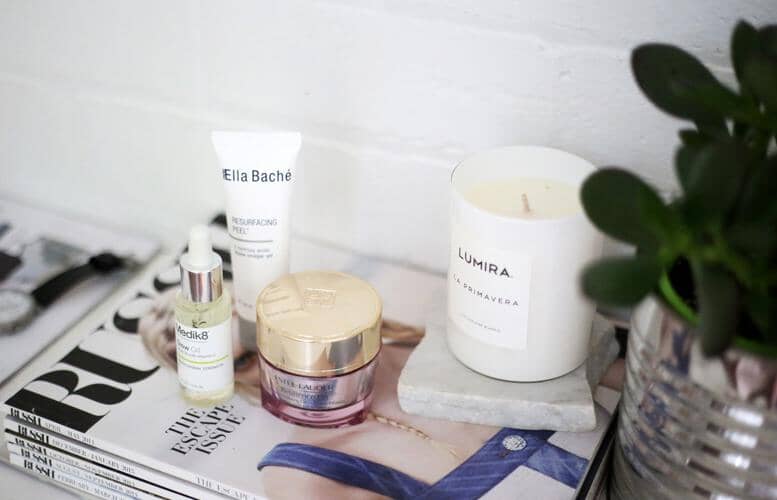They say all good things must come to an end, and this runs true for your skincare too. We all go by the expiry date when it comes to our milk but that’s not the only product that has a shelf life. Depending on factors like ingredients, application and packaging the shelf life of your skincare products can range anywhere from 3 months right up to 2 years. With confusion bound to arise and many companies not clear on their skincare shelf life, we’ve looked into the rules of skincare and make-up maintenance to settle the discussion once and for all.
Keeping in mind ladies, “If you can’t remember when you bought it, it’s time to say goodbye”
Skincare Ingredients | 6 months - 1 year
· Products that state that they are “preservative free” will often attract bacteria sooner than ones containing preservatives, if you’re going for the preservative free option be vigilant about replacing on a regular basis.
· Products with water as one of their main ingredients and “All Natural” products are typically contaminated sooner. Read the labels carefully and be vigilant about replacing your products.
· Products containing vitamin C are sensitive to the sunlight and will degrade if over exposed, make sure these products are kept in a cool dry place (a good idea in general).
· When shopping for products with a SPF value, always make sure it has an expiration date on it. Using a product past its expiration date doesn’t necessarily mean it will harm your skin but you may not receive optimal results.
Quick tip
- Face and body oils should be packaged in a dark colored glass or opaque packaging, which in turn will protect the properties of the oil.
- Products with pumps or tubes have a longer shelf life than jars which in turn become contaminated much more quickly due to handling with your fingers for application.
Foundation Shelf Life | 6 months – 1 year
· When it comes to foundation, trust your nose as smell and discoloration will be the truth of product viability. Take note if the foundation appears separated or dried out. These are the first signs that it’s time to toss!
· Make-up that relies on sponges, fingers and brushes for application can introduce bacteria into the product.
· Brush tip concealers and foundation pens often use a synthetic hair that is antimicrobial. The benefit of using synthetic hair brushes is that they don’t absorb the product and this allows for the product to have and extended life span.
· Going over its shelf life does not necessarily mean your causing harm to your skin but it does mean you may not see optimal results during application.
Quick tip
- Foundations that come in pumps and tubes prolong the life, just like skincare. If you want to increase the shelf life the less handling and contamination the better.
Lipstick Shelf Life | 1 – 2 years
· Lipsticks are formulated without water, which is where bacteria most like to grow, pay close attention to discoloration and changes in smell.
· Lip glosses should be replaced more often because application requires pumping the wand to get product, similar to mascara. The introduction of air compromises the product more quickly.
· Whether it’s in a tube or a pot, lipsticks and glosses will be exposed to bacteria from either your lips or fingers, so trust yourself with this one if its discolored or its performance has hindered then it’s time to re purchase!
Quick Tip
- Tube lipsticks boast a longer shelf life, with bacteria living on the surface of the lipstick you can scrape the top layer off to remove bacteria.
Mascara, Eyeliner and Eye Shadow Shelf Life | 2 – 3 Months
· Separate eye make-up by those containing water and those that don’t as mascara and liquid liner need to be replaced more often than powder shadows.
· Waxed based eyeliners will last longer than liquid liners which are increasingly prone to bacteria. Regularly sharpen your liner as this will refresh the product.
· Bacteria can spread quickly and cause harm if it comes in contact with your eye. Take care of your eye make-up, never share it and avoid eye make-up all together if you have an infection.
Quick Tip
- Over pumping your mascara will dry the product out faster and increase the chances of bacteria.
- Shadow powder should remain in a tight sealed container
- Twist-up eye liners keep the product protected and lowers the risk of bacterial infection, a regularly sharpened wax-based eyeliner pencil has the same benefits.
- A clean application goes a long way, and the golden rule… never sleep with your eye make-up on!
So if you’re reading this and have a sudden urge to go through your make-up (and finally throw out that blue-eye shadow!) there is no better time than the present - plus it’s a great excuse to restock on your favourite beauty treats!
*Image Credit Lolitasaysso
